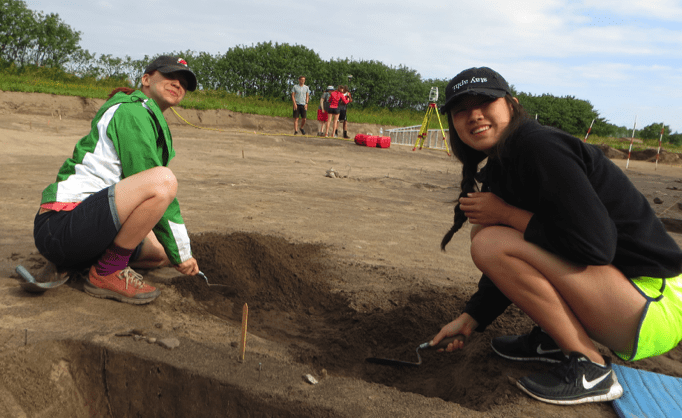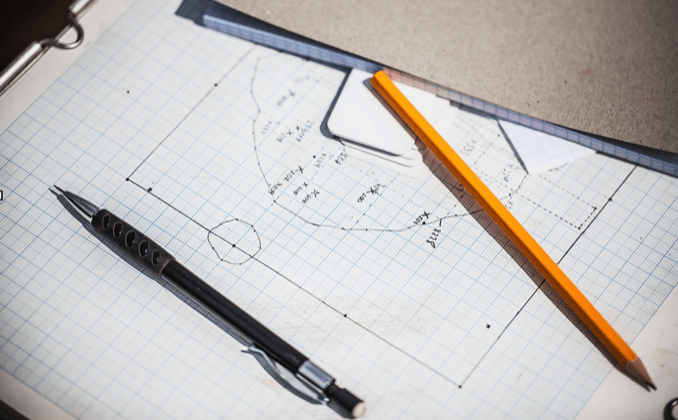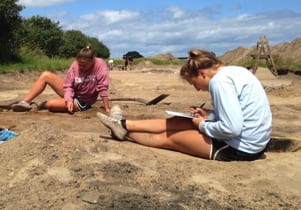


During three weeks of the program, students participate in excavating a Viking Age site and learn a variety of techniques archaeologists use in excavating and analyzing materials.
During excavation, individual features are documented and drawn, in order to be able to reconstruct the individual buildings and the over-all structure of the settlement. In the context of such features, we normally find shards of pottery, bones and other remnants of the activities which were carried out inside and around the building, both during its lifetime and when it had gone out of use. The filling material dug up from the houses is sieved, in order to find even the smallest objects, such as glass beads, shards, and bone fragments. Earlier seasons have found, for example, beads, whetstones, and various metal objects such as knives and Viking Age ornaments and coins of Frankish origin.
The excavation provides a hands-on experience of Viking Age material culture, which, besides the scant written evidence, is the main source for studying Viking culture and society. Most importantly, however, participation in the excavation will introduce you to the broad field of archaeological research methods and give you an idea of how archaeologists achieve knowledge about prehistoric societies.
Students operate in small teams of three or four, working together on the excavation and recording of a single structure (a pit house or post-built house). The field school offers opportunities to experience all aspects of archaeological field-work, including excavating, water-sieving, documentation of features and finds, preparation of artifacts, etc. Most of the work entails a physical component (although alternative, less physical tasks are possible for those students for whom such work is not appropriate); students will need proper clothing including rainwear, heavy boots and wellingtons.
The Field School is directed by a team of archaeologists from Moesgaard Museum and the Department of Archaeology at Aarhus University. During the field school, participants stay in local houses and/or summer cottages.
